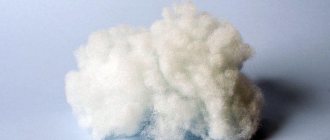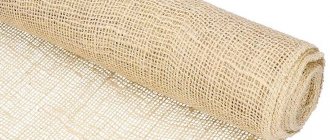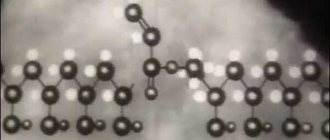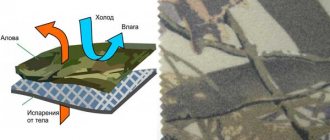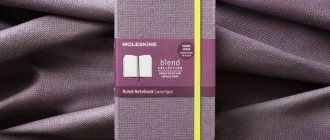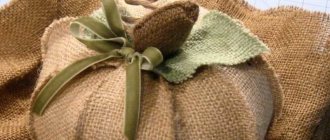Chrysotile asbestos or “white asbestos” is classified as one of the group of natural minerals bearing the commercial name “asbestos”. It is part of the serpentine group, and structurally belongs to layered silicates. Chrysotile asbestos has the formula 3MgO 2SiO2 2H2O, being a magnesium hydrosilicate found in nature in the form of a crystal consisting of hollow fibril tubes with a diameter of 2.6 10⁻⁵mm and a length of up to 2-3 cm. The mineral is capable of splitting into the finest chrysotile fibers, up to 0.5 microns thick.
Features of the material
The properties of different types of asbestos may differ, this also applies to the thickness and length of the fibers, but in general the material has the following features:
- High tensile strength, elasticity. It has amazing tensile strength, the figure exceeds even the level of steel - up to 30,000 kgf/cm2;
- Low thermal conductivity. Asbestos is also resistant to high temperatures and only melts when exposed above 1550 degrees;
- Resistant to chemicals. Resists well to alkalis, acids and other corrosive compounds.
According to the classification, asbestos minerals belong to hydrous silicates, and the fibrous structure is most pronounced in chrysotile asbestos - for these properties it is most widespread.
The structure of chrysotile asbestos looks like twisted nodular fibers that are arranged in waves. Short fibers are not as strong as long fibers.
Is it harmful to health?
There is a popular belief that building materials are extremely dangerous to human health due to harmful fumes. There is another version that speaks of its safety, which has not yet been definitely confirmed. Let's look at why asbestos is dangerous.
Pixabay
Indeed, prolonged contact with the material during installation can have a detrimental effect on the body. For example, occupational diseases associated with this fibrous substance include chronic respiratory diseases, fibrosis and even lung cancer.
The occurrence of these diseases is due to the fact that when inhaling dust particles from asbestos, its fibers are not removed from the lungs, but settle there for life. Thus, they gradually destroy the organ and harm health. However, you can only get sick if a person stays in a place with such dust for a very long time.
The substance only when combined with cement does not emit any harmful fumes and is completely safe for humans. But it is still better to refrain from using it in a bathhouse, since with periodic heating it can crumble over time. And this will lead to the spread of dangerous dust in the air.
Types of material
Asbestos can be serpentine and amphibole. The first type has a whole set of positive properties: it does not burn in fire, is elastic and very strong. The indicators of the second type are more modest; it is mainly used where the ability to withstand the destructive effects of acids is required, that is, in the chemical industry. Serpentine asbestos is also less harmful to health than amphibole asbestos.
Since only chrysotile asbestos belongs to the serpentine group, you can sometimes find it mentioned as a separate species. As for amphibole, in this case the diversity is greater. Such minerals include amosite, crocidolite, anthophyllite, actinolite, and tremolite.
Asbestos has different colors, which is also reflected in their name. Chrysotile is called white, crocidolite is also called blue asbestos, and the mineral amosite has a brown tint.
Chrysotile asbestos is divided into several groups, depending on the fractional composition of the existing fibers. Separation occurs using a special device and a sieve with cells of different sizes. According to fractions, the material is divided into seven groups, among which the sixth is most often used.
Physical properties
Optical
Color. White, gray, dark, gray-blue (chrysotile-asbestos yellow, bronze), green in various shades.
Trait. White, light grey.
Shine. Glass
The sheen is silky, greasy, matte; some have pseudomorphs of bronzite; they tend to retain a bronze sheen.
Transparency. Translucent, opaque.
Refractive indices
Refractive indices range between 1.55 and 1.80 (highest for those rich in iron).
Mechanical
Hardness. 2. Fragile.
Density. 2.5—3.3.
Cleavage. Very perfect parallel to the c axis (grain direction)
Kink. Fissile.
Chemical properties Behavior in acids. Difficult to dissolve or insoluble.
Other properties. Surfaces with shiny gliding mirrors are often observed.
Diagnostic signs
Similar minerals. Olivine, bronzite (bastite), garnet, chlorites, magnesite, opal, chalcedony..
Associated minerals. . Serpentine, olivine, tremolite, magnetite, löllingite, sphalerite, arsenopyrite.
Scope of application
Since asbestos has a large number of irreplaceable properties, it has found application in a variety of areas:
- This material is included in protective suits for representatives of professions involving risk, such as firefighters. You can also find fibers in special paper products, including the production of special asbestos cardboard, which is distinguished by its strength. It is intended for filtering liquid media;
- Many building materials contain asbestos, and it is impossible to do without its use in the production of slate and various pipes;
- This mineral has also been noted in the automotive industry - it is used to create brake pads, gaskets, clutches, discs and other spare parts;
- The production of asphalt also cannot be done without asbestos - it is necessary when laying the asphalt road surface;
- Due to its low thermal conductivity, asbestos can provide good protection from high temperatures, therefore it is used to insulate various heating devices;
- In addition to industrial applications, asbestos products are often used as accessories for a fire show - a spectacular performance using fire.
Asbestos (!)
One day the thought crept into my mind, why RAMMSTEIN, with their inherent anguish, have not yet written a composition about asbestos...
Not all articles can be popular, entertaining or interesting. There is always one that does not fit the generally accepted opinion. Now, dear reader, you are witnessing just such a case. I understand the attitude in Russia towards asbestos and asbestos production, but nevertheless I will risk expressing my point of view, without looking back at the “forces of the chrysotile mafia.” Based on the April asbestos notes in Tg, under the cut about the “folk” heat insulator and an important component of slate.
In a survey conducted in April of this year in the LAB-66
, 67% of respondents wrote that they do not know at all what asbestos is, where it is used and what impact it has on human health.
Distribution of votes
In this regard, Europeans and Americans are more aware. An example is a “tag cloud” that summarizes all asbestos-related terms mentioned in the media. The larger the text size, the more often the word appears.
Asbestos is a unique thing that is strictly prohibited in Europe and is widely used here.
Compare for yourself
For me personally, since childhood, asbestos has been associated with two things - the wicks in a kerosene lamp and the material paronite
, from which my father and grandfather, born drivers, constantly cut out some kind of gaskets, either for the engine or for the muffler. Later, using logical reasoning, I guessed that asbestos is part of slate, common pipes (which went to both chimneys and sewers), is used in blocks when building houses, and is found in the boxes of old gas masks. Moreover, most often the emphasis was placed on how fire-resistant and chemically inert this material is; there was somehow no discussion about its environmental friendliness. Having matured and joined the Chemistry Olympiad movement. I looked at this fibrous material from a different perspective. Although in the 21st century there are enough young people who treat asbestos the same way as my late grandfather and father. I recently had an argument with a friend who was trying to cut old slate using a grinder. The comrade heard out of the corner of his ear that, yes, asbestos “seems to be harmful, but now they have been putting another, safe asbestos in slate for a long time.” No matter how it is...
INTRODUCTION TO CHEMISTRY AND MINERALOGY
Intro. In addition to the chemical method of understanding the world, there is also a poetic method. With its help, you can also evaluate the tactical and technical characteristics of asbestos. For this purpose, I recommend using the “Ural tales” of the legendary P.P. Bazhov, in particular the “asbestos fairy tale” Silk Hill:
In addition to the chemical method of understanding the world, there is also a poetic method. With its help, you can also evaluate the tactical and technical characteristics of asbestos. For this purpose, I recommend using the “Ural tales” of the legendary P.P. Bazhov, in particular the “asbestos fairy tale” Silk Hill:
<…> In the handicraft they spun, wove, weaved and knitted from stone tow, and when Demidov happened to go to the capital, he took all this crafts with him. The man, of course, was cunning: he knew to whom and why to give a wonder that would not burn in fire. They say that he received great benefit from these gifts <...>
Reading Bazhov’s fairy tales, you can inadvertently fall in love with asbestos as a construction material, which is most likely what happened. Since the beginning of the 20th century, these fibrous materials have been used everywhere
And then, around the 80-90s, there was a turning point in the public consciousness (residents of developed countries) and the use of asbestos was abandoned almost completely.
And the demand/interest in this mineral has shifted... Everyone can see for themselves in the diagram above where it has moved. About the chrysotile hero, sponsored by the Russian government
Oozing oil, quite tense cartoons.
But everything is there - my favorite fiberglass, Western "Urags", etc. and so on. Part 1 Part 2
By the way, these laboratory spheres are made of asbestos. It repels rats. Let us know if you experience choking, dry cough, or cardiac arrest during the tests. This is not part of the experiment. This is asbestos.
Quote from Cave Johnson (Portal 2), thanks to idelgujin In general, why this happened will have to be explained from the point of view of chemistry; Bazhov and cartoons from OJSC Uralasbest alone will no longer do.
Asbestos
- a collective name for a number of minerals from the class of silicates that in nature form aggregates consisting of the finest flexible fibers. There are six types of asbestos, each of which consists of elongated, thin fibrous crystals, with each packet in the package consisting of many microscopic fibrils.
Mineralogical classification
The most common form of asbestos is chrysotile or white asbestos.
This serpentine mineral is a hydrated magnesium silicate. Along the way, there are asbestos of the amphibole group: amosite, anthophyllite, crocidolite, actinolite and tremolite. Serpentine group asbestos is a rolled sheet (sheet structure). Asbestos of the amphibole group are elongated crystalline aggregates (chain structure). Variety of spatial forms
A note about serpentinite (coil), steam rooms and nuclear power plants
Serpentine should be distinguished from serpentinite, or serpentine (the texture of the stone is similar to the texture of snake skin). This rock is actively used in the construction of baths - it is used in steam rooms, because it is durable, heats up quickly and retains heat for a long time. Chemically stable when heated to 450°C.
Serpentinite Mg6(Si4O10)(OH)8 contains a significant amount of bound water and, due to hydrogen atoms, is capable of slowing down neutrons in the process of elastic collision, this is the so-called. neutron thermalization process
Thermalization of neutrons
is the last stage of the process of moderating neutrons in various media, when chemical bonds and thermal movement of atoms of the medium begin to play a significant role.
Because of these properties, serpentinite can be used as a dry filler inside steel jackets in some nuclear reactor designs. In that same ill-fated Chernobyl RBMK, it was serpentinite that was used to protect operators from neutron leakage. Maybe it will be added as a filler to special radioprotective “hydrate” concrete (to increase the density of concrete and the efficiency of neutron capture). Hydrated concrete is used in almost all nuclear power plants (including those with VVER reactors) in the elements surrounding the reactor ~ dry protection. Most ore deposits are mineralogically heterogeneous, as are most industrial forms of the mineral. Therefore, quite often the division into one single class of asbestos is conditional (“according to paper requirements”).
Typically, light microscopy is used to determine what type of asbestos mineral is present. Under a microscope, chrysotile appears as a white fiber, crocidolite as a bluish-blue fiber, and amosite asbestos, often called brown asbestos, as a gray-white fiber. Asbestos with tremolite, anthophyllite and actinolite is relatively rare. The picture below shows microscopic images of various types of asbestos + EDX analysis graphs of individual fibers. With EDX, unlike light microscopy, the difference between different types of minerals is very clear. The images make it possible to evaluate the structure and dimensions of the fibers of different asbestos, which will later be useful for understanding what is written in the section on the effect on health.
It is clear that chrysotile and the various amphibole group minerals differ in crystal structure, chemical and surface characteristics, as well as in the physical characteristics of the fibers, which are usually described as the ratio of fiber length to diameter.
Due to its interesting physicochemical properties and unique structure (inorganic fibers), asbestos was actively used throughout the 20th century wherever possible. For example, in the 1939 film The Wizard of Oz, asbestos was used as artificial snow. Such “snow” was also sold in stores where anyone could buy “asbestos decorations” for Christmas.
In our area, this is traditionally slate, pipes and all kinds of heat-resistant seals (including brake pad linings). There are still two enterprises in Belarus that proudly call themselves “the flagships of the Belarusian asbestos cement industry.” This is OJSC “Krichevcementnoshifer” (Krichev, Mogilev region), which produces corrugated asbestos-cement sheets and flat chrysotile-cement sheets. And OJSC "Krasnoselskstroymaterialy" (Krasnoselsk settlement, Grodno region) producing similar products + chrysotile cement pipes. As the advertising brochures write, the capacity of the enterprise's workshops for the production of asbestos-cement sheets is 90 thousand standard slabs, asbestos-cement pipes - 1,400 km of standard pipes per year.
In my memory (late 90s), opinions periodically arose that during the production of slate/pipes, asbestos changes its structure and becomes safe (due to chemical transformations or due to the cement binder and enlargement of fibers). Numerous studies have confirmed the groundlessness of such claims. Moreover, it became clear that old asbestos cement, under the influence of external factors, becomes an excellent source of fine fibers, indistinguishable from those just extracted from an asbestos quarry. But unlike rock in a quarry, fibers from old slate can be lifted into the air even by not too strong a wind (not to mention slate “cleaners” with their high-pressure washers).
It is also worth noting the fact that asbestos in its various variations can be found not only in slate or asbestos-cement pipes. It can also be present as an impurity in a mineral such as vermiculite. By the way, I mentioned it in my article When Vodokanal is silent. Effective purification of drinking water at home
Expanded vermiculite is used by many gardeners and houseplant owners as a drainage material. Naturally, the likelihood of asbestos appearing in vermiculite is small, but it does exist. Therefore, when working with it, it is necessary to observe minimum precautions (see about them at the end of the article) and avoid crushing/dusting.
In addition to vermiculite, asbestos impurities can also be found in talc (yes, the one that powders). Indicative in this regard is the precedent of the Johnson & Johnson company, against which 22 women who used the company's products (baby powder) filed a lawsuit in Missouri. The women claimed that the talc contained asbestos. The jury found the plaintiffs' claims valid and ordered the company to pay $4.69 billion in compensation to victims in 2021.
IMPACT ON HEALTH
As already mentioned, at one time it seemed to be common knowledge that asbestos was a carcinogen. Plus, there is even a report from the International Agency for Research on Cancer (IARC) for 2012, which says in clear and white:
There is sufficient evidence of the human carcinogenicity of all forms of asbestos (chrysotile, crocidolite, amosite, tremolite, actinolite and anthophyllite)
But then something happened (“ money defeated evil
”) and manufacturers of building materials with asbestos in third world countries perked up and began to prove that in fact carcinogens are only amphiboles, and chrysotile is white and fluffy, like asbestos. It is not surprising that the greatest activity here was in countries where asbestos was actively used (Russia, Brazil, Pakistan, etc.) and provided a significant share of profits through the sale of inexpensive building materials. In connection with Pakistan, one immediately recalls an open letter from 143 scientists and organizations from 30 countries, in which they called for maintaining the safety and responsible use of chrysotile, which causes deadly diseases, and reminded that the safe use of chrysotile asbestos has never been documented.
Interesting thoughts are expressed by some lobbyists: “chrysotile is good, amphibole is bad.” In my author's interpretation it sounds something like this:
Any bans on white asbestos (chrysotile) could cause great harm to developing countries, where asbestos-cement products - water pipes and roofing material - have proven invaluable to the poorest segments of the population. Without asbestos many lives cannot be saved...
It is interesting that, in contrast to researchers confirming carcinogenic properties and clarifying their mechanisms, there are not so many defenders of the asbestos industry (on the fingers of one hand, their articles with noticeable frequency can be found on the pages of all asbestos mining companies without exception, as a kind of indulgence of conscience. By the way, these few “ well-known highly paid scientists
” operate mainly with medical statistics data, and not with a description of the mechanisms by which the effect of chrysotile microfibers on the body differs from the mechanism of action of amphibole...
Most often, defenders of asbestos from chemicals emphasized that different crystal structures lead to health effects. Amphiboles are needle-like, they “pierce the body” and cause harm. Fortunately, the picture is convenient for showing horror stories on TV:
In fact, as I already mentioned, asbestos deposits have high mineral heterogeneity, and no one is particularly focused on checking the crystalline structure of the material. There is no way to selectively exclude amphibole inclusions from a piece of chrysotile. And besides, the most doubtful thing is that it is the needle form that is to blame for carcinogenicity. In the picture above, with examples of fibers, everyone can see for themselves that chrysotile’s small fibers are no different from amphibole fibers, especially since it is believed that airborne asbestos particles live in the size range <3 µm in diameter and >5 µm in length.
The concept of “needles are worse than particles” is actually universal and can be applied to any fibers floating in the air and entering the lungs (not just those unfortunate pieces of amphibole asbestos). The fact is that long fibers are more difficult to undergo the process of phagocytosis
Phagocytosis (ancient Greek φαγεῖν “to devour” + κύτος “cell”) is a process in which cells (protozoa, or specially designed blood cells and body tissues - phagocytes) capture and digest solid particles.
Short fibers or corpuscular objects can be easily captured by phagocytes and eliminated by macrophages. But with long ones, due to their linear dimensions, this is impossible. There is a so-called frustrated phagocytosis - if the phagocyte is not able to absorb a foreign body, then it all ends with the destruction of the phagocyte and the death of macrophages (see diagram below):
Short fibers and small fragments that enter the lungs during respiration and do not damage the phagolysosome membrane can be easily absorbed by alveolar macrophages and transported to the lymphatic vessels. How and where - see the picture of asbestos fiber deposition after inhalation:
After settling in the respiratory tract, a rather long process of periodic inflammation begins:
Due to the migration of fibers throughout the body, not only the lungs are affected, but also the cells of the larynx, liver, colon, etc.
Inhaled fibers can reach the pulmonary alveoli, where they are removed by convective currents into the pulmonary lymphatic vessels. Once they reach the veins through the lymphatic system, they can potentially reach all organs through the circulatory system, including the liver through the hepatic artery. And ingested fibers (which are traditionally less abundant than inhaled fibers) can pass through the intestinal mucosa and finally be delivered to the liver through the portal vein. As a result, during a very long latent period (30-40 years), malignant transformation of cells can occur as a result of a complex interaction of various mechanisms: chronic inflammation, generation of reactive oxygen species (ROS) / reactive nitrogen species (RNS), chromosomal/genomic aberrations, decreased immune response, binding to nucleic acids and proteins of the cell nucleus. Interestingly, many old books write that asbestos fibers are excellent adsorbents. No wonder they were used in old gas masks. Russian Wikipedia also mentions this fact (referring to TSB):
TSB does not lie, asbestos, while in the body, can absorb radionuclides and various carcinogenic substances, becoming a kind of battery attached inside a cell or target organ. For example, the authors of the work indicate in situ accumulation of benzopyrene on asbestos and an increase in the mutagenic effect.
Moving away from issues of fiber surface texture, I would like to note that in scientific works on the toxicology of nanofibers it has been repeatedly shown that the body’s reaction to an inhaled fiber is not of one type, but is the sum of several subsequent physiological responses, each of which is determined by different physicochemical factors. characteristics of the particle in question. Three main factors act together: the shape of the particle, its crystalline and surface composition, and the time during which the particle remains unchanged in the body, a kind of “biocompatibility” or biopersistence. A comparison of the two forms of asbestos on some of the parameters is shown in the picture below. The difference between the two groups of minerals is very small.
Relatively recently, studies have appeared that confirm the hypothesis that it is not so much the shape, but rather the surface chemistry of asbestos fibers that is responsible for the carcinogenic effect. The researchers synthesized samples of chrysotile in which iron ions were completely removed. This sample was then tested for its ability to generate free radicals and attack human lung epithelial cells. Natural chrysotile from Rhodesia was used as a control. After 24-hour incubation, natural chrysotile already exhibited a pronounced cytotoxic effect, the artificial material was inert. Similarly, synthetic chrysotile nanofibers lacking iron did not exhibit genotoxic or cytotoxic effects and did not induce oxidative stress in a mouse alveolar macrophage cell line. To obtain direct experimental evidence of the chemical role of iron in the reactivity of asbestos, a set of nanochrysotiles with 0.6 and 0.9% iron was synthesized. Even the lowest concentration of iron in chrysotile caused DNA strand breaks, lipoperoxidation, inhibition of redox metabolism and disruption of cell integrity, i.e. action similar to natural chrysotile. The authors reasonably suggest that metal ions play a critical role in the oxidative stress and genotoxic effects caused by chrysotile asbestos. This also applies to amphiboles, which have the highest iron content (see table). It is logical that amosite and crocidolite (leaders in iron content) are also considered the most carcinogenic of all asbestos. So feel free to laugh in the face of anyone who claims that one asbestos is beneficial, and the other is a carcinogen.
To the collection of stories
Comment from dear Javian
CONCLUSION
What we are left with as a pure residue is the following: micro- and nanofibrous materials are able to penetrate through the lungs into the body, spread to organs and tissues, settle there and cause a permanent (chronic) immune response (inflammation).
This is greatly facilitated by the elongated shape of the fibers. Long fibers are not “utilized” by the protective mechanisms of the human body. Short fibers are utilized, but cause a strong inflammatory response, which sooner or later leads to cancer through oxidative stress and lipid peroxidation mechanisms. In this regard, nanofibers are similar to ionizing radiation. Applicable to asbestos, the main toxic effect occurs not due to the shape of the particle, but due to the content of iron ions in the silicate layers. So both asbestos of the amphibole group and asbestos of the serpentine group (chrysotile) have a carcinogenic effect to the same extent. In developed countries, almost everyone understands this, so asbestos and materials containing it are practically excluded from human economic activity. In the post-USSR territory, it is still “a cheap and important building material.” In a static state, slates/pipes are more or less stable, but the removal of asbestos fibers begins during a) mechanical processing (cutting/crushing), b) over time due to the degradation of binders, and then - wind, high-pressure washing, etc. asbestos dust in the air, and c) destruction/demolition of old buildings in which asbestos was used. Demolition using a directed explosion will “smoke” especially strongly...
What do we do?! First, go to channel LAB-66 and use the search to read everything related to air filtration and HEPA. Finally (if this has not already been done in preparation for the coronavirus pandemic) choose good respiratory protection. Secondly, try to remove all asbestos-containing materials from your “construction” use - slate, pipes, etc. Thirdly, stay away from demolition sites of old houses in which such materials were used. In the best case, you need to leave the demolition site altogether, in the worst case, at least use P3 breathing filters. But here the question of protecting children’s breathing remains open, because In the vast majority of cases, good half masks are made for adult sizes.
Reminder for those who work in asbestos dust
When working with asbestos, it is important to understand that its main active part is an aerosol form, dust/microfibers dispersed in the air.
Intact monolithic asbestos and products made from it are quite stable. As with coronavirus, the main route of entry for dust is through the lungs. Most production kits for safe work with abestos include half masks with particulate filters. When working with brittle asbestos (fresh asbestos-cement slate), it is allowed to use filters of protection class P2; when working with loose, old asbestos, filters of class P3 are used. An example is the 3M “anti-asbestos” kit: 3M 7500 half mask + P100 class filters (2097/2091/2297/2096/2291/2296~5935~6035~6098). Domestic gas masks with anti-aerosol boxes of class not lower than P3 are also suitable. IMPORTANT! Work with asbestos only when it is wet, without using high-speed tools. Store all waste under water or at least in a moist state.
The dry removal method is used in exceptional cases when it is not possible to use water (for example, in the case of live electrical wiring, risk of damage to electrical equipment due to contact with water, etc.). The entire work area must be covered with plastic film and an exhaust hood (HEPA vacuum cleaner). Those directly removing asbestos should wear full-face masks/gas masks, preferably with forced air supply. All waste must be placed in sealed containers/containers with water.
The best method for removing asbestos is wet removal. The materials are moistened using an aerosol spray or so-called. “garden” hose with a pistol sprayer at low water pressure, avoiding the formation of strong jets. Humidification is only through the fog stage. In the simplest case, water is used, it is advisable to add detergent to improve wetting ability. It is optimal to use a diluted PVA emulsion for moisturizing. Wet, loose asbestos is removed piece by piece and placed in sealed containers filled with water. In the case of a thick layer of loose asbestos (insulating and heat-resistant boards), the asbestos is pre-impregnated for several hours through improvised nozzles/injectors with numerous side holes.
IMPORTANT! When working with asbestos and asbestos-containing materials, it is necessary to completely eliminate tools and equipment that generate dust - high-speed mechanical and pneumatic tools - angle grinders (grinders), saws, drills and rotary hammers; high pressure washers; devices using compressed air. Brooms and brushes must not be used.
To summarize, we can say the following: cutting asbestos-cement slate/pipes or disposing of similar materials can only be done in a wet state (manual wetting and/or working in rainy weather) using hand tools that do not create dust aerosols.
If there is a possibility of asbestos fibers appearing in the air of the city where you live, then the main recommendation is to use a supply ventilation system (so-called breathers) with preliminary HEPA filtration in the apartment. When going outside, use RPE with aerosol filters mentioned at the beginning of the note. It is better to walk in rainy weather. In general, living in a city with such conditions is unsafe. There are no specific drugs or antidotes for asbestos, and all treatment most often consists of maintenance therapy.
Asbestos is the clearest example when preventing a disease is much easier and cheaper than treating it. Be careful and take care of yourself!
By the way, regarding the demolition of old houses. In the United States, it is believed that more than 1,000 tons of asbestos were released into the air after the September 11 attacks. And that asbestos aerosols were responsible for the unusually high rate of cancer deaths among emergency workers after the attack. The New York City mayor's office even requested federal assistance to inspect individual apartments near the World Trade Center for asbestos fibers. And at this time here... they are cutting slate with a grinder, even without the simplest surgical mask.
It is not surprising that Americans generally recommend using positive pressure breathing systems when working with asbestos:
If suddenly someone at the dacha decided to cut slate or asbestos-cement pipes for a chimney, then at least it is worth trying to advise doing this using an angle grinder connected to a vacuum cleaner to collect dust (and a dust collection bag is best of HEPA filtration class). Despite the fact that in industry waste is fused with asbestos at fairly high temperatures. At 1000–1250 °C various silicon compounds are formed, and above 1250 °C silicate glass is formed. There is also mention of microwave sintering, with the help of which safe porcelain stoneware is obtained from dangerous asbestos.
Why does slate explode in fire?
Burning slate under normal conditions to dispose of asbestos is a bad idea.
If only because this composite material is very heterogeneous, when heated, internal stresses arise (due to the uneven expansion of asbestos and cement and the rapid evaporation of accumulated moisture) which eventually tear the slate, releasing part of the kinetic energy and the formation of fragments. Moreover, the destruction occurs extremely quickly and avalanche-like, and the fragments are sharp. There are references to the fact that the combination of oxalic acid with ultrasound completely destroys chrysotile asbestos fibers.
The procedure at home is quite easy, fortunately, ultrasonic washes are now quite common. It would be optimal to completely ban working with asbestos-containing materials and switch to more environmentally friendly materials. Moreover, even the WHO published a list of replacements for asbestos in its report.
But a reasonable question arises: where to put the warehouses loaded to capacity.
Don’t sacrifice them for the sake of some kind of public health. There was a similar situation in Belarus with the coronavirus - see “the economy is more important than the population.” What does this approach bring? W. Churchill answered it best: “ If a country chooses shame between war and shame, it will receive both war and shame.
”
PS Big greetings to the residents of cities where asbestos cement production still exists (in Belarus these are the cement plants of Krasnoselsk and Krichev). I highly doubt that in these cities, airborne dust is tested for asbestos fibers. But from the point of view of civil initiative, it is quite possible to inquire. If you have friends or acquaintances, ask what personal protective equipment is used on these flagships of the Belarusian asbestos cement industry...
This concludes the story about asbestos. As new interesting information appears, I will update the article. I welcome questions, suggestions and comments in my tg channel or on Patreon.
UPD. Proof that the article resonated
For the first time in my “habre practice” there are so many minuses with the motivation “I do not agree with the author.” It seems that one should be upset (the downsides), but on the contrary, I feel joy, because everyone who disagrees will most likely try to conduct a small investigation themselves, which means, potentially, another person will appear who understands the topic of asbestos...
With respect, colloid chemist and public safety evangelist Sergei Besarab (Siarhei Besarab)
REFERENCES
- Separation And Characterization Of Respirable Amphibole Fibers From Libby, Montana Inhaled Toxicol. 2008 June; 20(8): 733–740.
- Iarc Monographs On The Evaluation Of Carcinogenic Risks To Humans, Volume 81, Man-Made Vitreous Fibers, Pp. 45-54, 2002, Iarcpress, Lyon, France
- Albin M, Magnani C, Krstev S, et al. Asbestos and cancer: An overview of current trends in Europe. Environ Health Perspective. 1999;107 Suppl 2:289–298
- Dumortier P, De Vuyst P, Yernault JC. Non-fibrous inorganic particles in human bronchoalveolar lavage fluids. Scanning Microsc. 1989;3:1207–1216
- Edelman D.A. Exposure to asbestos and the risk of gastrointestinal cancer: a reassessment. Br J Ind Med. 1988;45:75–82
- Enterline PE, Hartley J, Henderson V. Asbestos and cancer: a cohort followed up to death. Br J Ind Med. 1987;44:396–401
- Whittaker, E. J. W. (2009). Structure and properties of asbestos 1 1Reprinted from Fiber Structure, JWS Hearle and RH Peters (eds), “Asbestos”, pp. 594–620. Copyright Butterworth & Co. (Elsevier) and the Textile Institute, 1963. Handbook of Textile Fiber Structure, 425–449.
- Gualtieri, A. F., Lusvardi, G., Pedone, A., Di Giuseppe, D., Zoboli, A., Mucci, A., … Lassinanti Gualtieri, M. (2019). Structure model and toxicity of the product of bio-dissolution of chrysotile asbestos in the lungs. Chemical Research in Toxicology.
- Whysner, J., Covello, V. T., Kuschner, M., Rifkind, A. B., Rozman, K. K., Trichopoulos, D., & Williams, G. M. (1994). Asbestos in the Air of Public Buildings: A Public Health Risk? Preventive Medicine, 23(1), 119–125.
- Virta, R. (2011). Asbestos. Kirk-Othmer Encyclopedia of Chemical Technology.
- Foresti E, Fornero E, Lesci IG, Rinaudo C, Zuccheri T, Roveri N. Asbestos health hazard: a spectroscopic study of synthetic geoinspired Fe-doped chrysotile. J. Hazard. Mater. 167(1–3), 1070–1079 (2009)
- Gazzano E, Foresti E, Lesci IG et al. Different cellular responses evoked by natural and stoichiometric synthetic chrysotile asbestos. Toxicol. Appl. Pharmacol.206(3),356–364 (2005)
- Gazzano E, Turci F, Foresti E et al. Iron-loaded synthetic chrysotile: a new model solid for studying the role of iron in asbestos toxicity. Chem. Res. Toxicol.20(3),380–387 (2007)
- Foresti E, Hochella MF, Kornishi H et al. Morphological and chemical/physical characterization of Fe-doped synthetic chrysotile nanotubes. Adv. Funct. Mater.15(6),1009–1016 (2005)
- Turci F, Tomatis M, Lesci IG, Roveri N, Fubini B. The iron-related molecular toxicity mechanism of synthetic asbestos nanofibres: a model study for high-aspect-ratio nanoparticles. Chem. Eur. J.17(1),350–358 (2011)
Production Features
Of all types of asbestos, chrysotile is the one that is most mined and in demand - approximately 95% of asbestos produced worldwide is of this type. The largest deposits are located in Russia, for this reason the country is the world's largest producer, which supplies materials to other countries.
The technological process consists of the extraction of asbestos ore and its enrichment. The material obtained from the subsoil of the mountain is supplied to the plant, where production is fully automated. A special device separates asbestos into fibers. Ore beneficiation is carried out using the dry gravity method. After separation into fractions and passing through all the necessary stages, the material is packaged and delivered from the plant to various facilities where its use is required. More than a third of all asbestos batches received in Russian production are used for the production of asbestos-cement products.
Our company produces asbestos, so you can purchase it from us by ordering the required amount of material. Here you can find different types of products and buy asbestos chips for use in industrial needs.
Origin and location
Hydrothermal, under conditions of tectonic movements.
Asbestos forms thin veins and veins, and the orientation of its fibers can be different: if the fibers are located perpendicular to the walls of the veins (the most common case), then it is cross-fiber asbestos, if along the walls, then it is longitudinal-fiber asbestos , or so-called slip fibers. Some types of asbestos are characterized by differently oriented, sometimes radial, arrangement of fibers (“m ass fiber”).
Serpentine asbestos . Minerals of the serpentine group are formed primarily through the chemical alteration of magnesian olivine, orthorhombic and monoclinic pyroxenes. Olivine and enstatite are the easiest to be replaced by serpentine, followed by diopside, hornblende, etc.
Tremolite-asbestos is a mineral of regional and contact metamorphism, common in basement crystalline schists.
Packaging, transportation, storage
Usually the material is packaged in bags made of strong paper or synthetics. The weight of one bag can be 40, 45 or 50 kg. For example, chrysotile asbestos grade A-6K-30, the bag weight of which is 50 kg. It can be transported using any type of transport: by car, train, plane or ship. However, it is important to fully comply with the loading and unloading conditions. Also, while moving, it is necessary to carefully secure the load so that it is completely stationary.
The substance must be stored in packaged form so that the beneficial properties do not disappear. It is also advisable to use a closed room as a storage location. If this option is not available, then in an open area the material should be kept packed in synthetic bags and covered with a waterproof cloth on top. Asbestos can be stored in this form, but not for more than a year.
Chemical composition
Chemical composition of chrysotile
Chrysotile in chemical composition is a hydrous magnesium silicate, the theoretical composition of which corresponds to the formula 3MgO∙2SiO2∙2H2O, which corresponds in mass terms to the content of MgO - 42.4%, SiO2 - 44.50%, and H2O - 13.04% . As a rule, it always contains impurities in the form of FeO and Fe2O3, the content of which rarely exceeds 2%, and part of the FeO of chrysotile isomorphically replaces MgO, while the remaining amount of iron is associated with a mechanical admixture of magnetite, less often chromite. The amount of other impurities (Al2O3, Cr2O3, CaO, NiO, MnO, CuO and alkali) is determined by fractions of a percent. In the presence of impurities, the amount of MgO and SiO2 in chrysotile is usually reduced to 40% or less; the content of constitutional water also fluctuates, sometimes increasing to 14.5-15.0%, sometimes falling to 11.5-12.0%. An idea of the chemical composition of chrysotile is given in the table.
| Components | Bazhenovskoye field (Russia) | Tzetford (Canada) |
| SiO2 | 42,60 | 39,62 |
| Al2O3 | 0,65 | 0,81 |
| Fe2O3 | 1,04 | 4,52 |
| FeO | 0,45 | 1,90 |
| MgO | 40,77 | 39,73 |
| Sao | 0,03 | — |
| Cr2O3 | — | — |
| NiO | — | — |
| MnO | — | — |
| H2O + 105° | 13,46 | 13,32 |
| H2O - 105° | 0,95 | 0,43 |
| K2O + Na2O | Footprints | No |
TOP 5 chrysotile asbestos products
- Slate and flat sheets One of the most affordable and widespread materials. Slate and flat sheets made of chrysotile cement are environmentally friendly, do not burn, retain their properties for decades and are resistant to the most aggressive environments.
- Chrysotile cement pipes are used for the installation of pressure and non-pressure water supply systems, ventilation air ducts, telephone and cable communication channels.
- Asbestos sheet is an effective fire extinguishing agent. It is actively used in sewing fire-resistant clothing and is used as a heat-insulating and cushioning material.
- Mineral additives Thanks to its unique physicochemical properties, chrysotile asbestos makes it possible to improve the characteristics of other substances. Today, mineral additives based on chrysotile are actively used in road construction.
- Brake pads The strength and wear resistance of the mineral allows it to be used to produce effective brake pads for passenger cars, industrial equipment and even public transport.
Effect on the body
As a rule, chrysotile poisoning develops over a long period of time. As a result of its accumulation in organs, various structural disorders occur. When such a mineral is mechanically destroyed or during its manufacturing process, asbestos dust is formed. After inhalation, the fine fibers penetrate into the lungs. But due to the property of chrysotile to dissolve intensively in an acidic environment, its excessive accumulation in the organ requires prolonged contact with dust particles. Even under such circumstances, the health hazards of asbestos sometimes become apparent only after ten or more years.
As a result of mechanical irritation of the respiratory system, bronchitis most often develops. But there is also a possibility of asbestosis, since dust settled in the lungs provokes scarring in the sensitive tissues of the organ.
If we consider how asbestos is harmful in terms of oncology, it is worth noting: chrysotile itself is not an aggressive carcinogen, it only contributes to the harmful effects of other carcinogenic substances on healthy cells of the body. There is an assumption that such a mineral provokes the occurrence of a rare cancer - mesothelioma.
According to recent research by scientists, the likelihood of developing cancer due to chrysotile in production is approximately 1 in 100,000 people. This information allows you to conclude how harmful asbestos is and whether it should be avoided.
Important! After the adoption of new acceptable standards and tightening of sanitary rules at Russian asbestos mining enterprises, no cases of asbestosis have been recorded over the past two decades.
It has been established that asbestos emissions are directly related to such a rare disease as mesothelioma (a type of cancer) Source static.tildacdn.com

